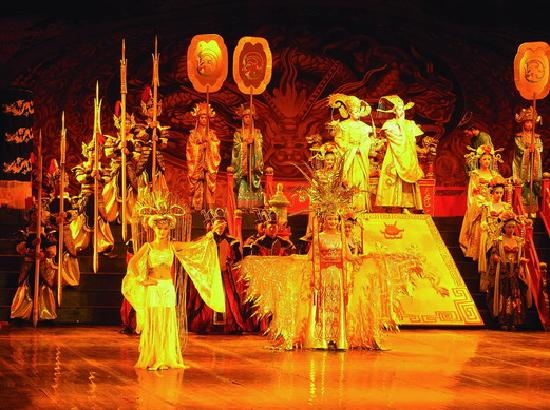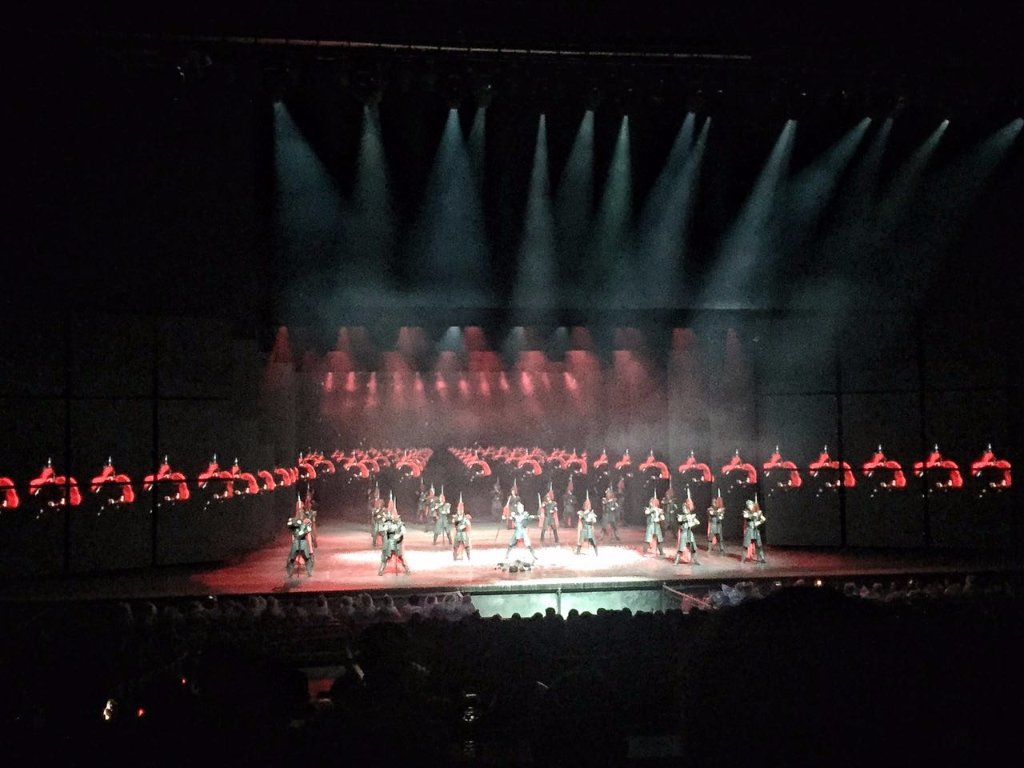At the Alamo in Hangzhou Summer, 2004
One of the fun things to do in Hangzhou is attend the Romance of the Song Dynasty Show. The Song Dynasty extended for about 300 years, ending in about 1275, with the conquest of the Mongols. Now I don’t think there are many people in the US who would attend a show titled the Romance of the late Dark Ages, or the Romance of the Era of the Imperial and Magnificent Church. This was the 1200’s, and we all believe in the progress of history. But Barbara Tuchman subtitled her famous book about the 14th Century, the next century, the Calamitous 14th Century. So this emphasis on romance just feels …. sort of misplaced, to me, the westerner.

Except that this is China. Now, really, not even I take the Romance of the Song Dynasty performance as a historically accurate guide to events. The lasers, smoke effects, and stage lighting are probably later inventions. But the Song is one of the most celebrated and sophisticated of Chinese dynasties, and Hangzhou was the capital city in the late Song, so there is some local promotion going on here too. When Hangzhou was the capital of the Song, it was one of the wealthiest and largest cities in the world.
The show is only part of a replica Song dynasty Hangzhou, with many streets with shops and costumes for the tourists to wear, and trinkets to buy, and a water-splashing festival and torch festival and an embroidered ball throwing event (a husband selection process, maybe as good as any).
The big show is on a big stage, in a partly open air theater with hundreds of raked seats. The fixed stage is deep and wide - suffice it to say that it accommodates horses, and more than one at a time. The close-in rows of seats are on a turntable, and retract to uncover a water feature, really pretty necessary in south China.
There are several episodes of the beautifully costumed and choreographed dancing, with fabulous costumes and dozens of dancers and the backflips and leaps you are accustomed to seeing in Shen Yun. These are part of the main story, the glory of the Song and its extinguishing by the Mongols.
One of the set pieces is a battle, probably the battle of Lin’an in 1275, in which Song forces prepared for one of their last stands against the attacking Mongols. The staged stone fort housing the Song defenders looks for all the world like the south wall at the Alamo.

Mongols amassed. The Alamo -er, Lin'an - in the background
Source: TripAdvisor
I am pretty sure that the Mongols had far superior numbers at Lin'an, as did the Mexicans. The attacking Mongols have cannons, as did the Mexican army, that sound pretty loud in the performance space, and the attackers are using short ladders, just like at the Alamo, and the defenders are beating them off with the ends of their pikes, and above it all stands Yue Fei, a Song leader, dressed in fabulous military costumed splendor, looking like William Barrett Travis. The attackers have horses, on stage, and from what I can gather, the result at the Alamo was about the same as the result about 561 years earlier at Lin’an – all the defenders were killed, but the victory was short lived. Months later, the rebel Texans defeated the Republic of Mexico, and created the Republic of Texas. About 90 years later, the Ming rousted the ruling Yuan dynasty and drove them out of China, and the battle became an iconic struggle. I am pretty sure that Yue Fei would have written something similar to Travis' last appeal from the Alamo -
I am determined to sustain myself as long as possible & die like a soldier
who never forgets what is due to his own honor & that of his country—Victory or Death
- although he might have referenced the Song emperor rather than the country. History does seem to rhyme.
